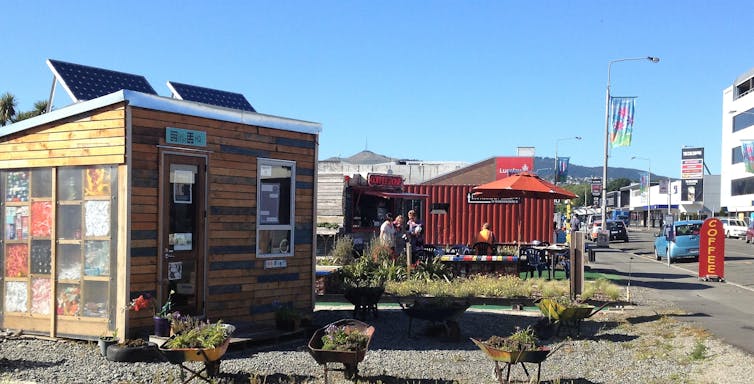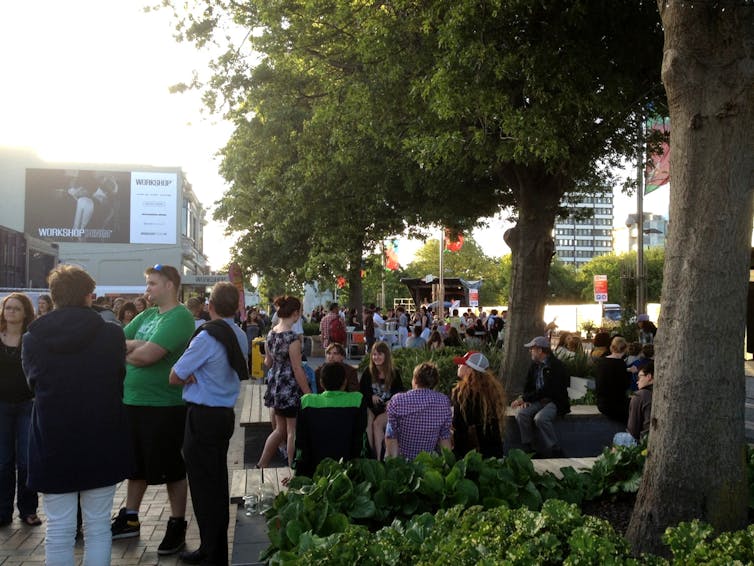Cities will endure, but urban design must adapt to coronavirus risks and fears
- Written by Silvia Tavares, Lecturer and Researcher, Urban Design and Town Planning, University of the Sunshine Coast
The long-term impacts of coronavirus on our cities are difficult to predict, but one thing is certain: cities won’t die. Diseases have been hugely influential in shaping our cities, history shows. Cities represent continuity regardless of crises – they endure, adapt and grow.
Read more: Cities lead the charge on the coronavirus front lines
Once we can have our old lives back we will likely return to familiar routines and our memories of lockdown and isolation will start to fade. While our lack of memory is arguably a resiliency resource, urban designers and planners have a long-term role in ensuring urban life is healthy. To fight infectious diseases, cities need well-ventilated urban spaces with good access to sunlight.
The design of these spaces, and public open spaces in particular, promotes different levels of sociability. Some spaces congregate community and are highly social. Others may act as urban retreats where people seek peace with their coffee and book.
How urban spaces perform during disease outbreaks now also demands our close attention.
What is urbanity and why does it matter?
Urban spaces are where communities come together. Urban planners and designers strive to generate a sense of belonging that makes people choose certain areas of a city or even a city itself. Urbanity refers to the public life that happens as a result of the exchanges and communication each space enables.
The combination of diversity and density achieve urbanity – it’s a product of diverse social opportunities in close proximity. This is why densifying cities has been a goal for achieving healthy, social and prosperous cities.
However, the risks of COVID-19 transmission have strengthened anti-density discourses. It is worth remembering, then, that ways of fighting disease, such as sanitation, were only possible because of the financial savings and infrastructure efficiencies enabled by denser cities. Density done right is safe. And it permits the human interactions and connections we need – and which we are now missing.
Once COVID-19 is less of a threat we will crave the normality of going back to our old lifestyles as much as possible. The role of urban planners and designers is then to create a background for public life to happen in social and healthy ways.
Learning from other disasters
Following the 2011 earthquake in Christchurch, New Zealand, where the CBD lost some 800 buildings, the community took a very different view of urban spaces. Crowded areas and tall buildings were a source of fear. The common attitude was to avoid density – what if another earthquake hit?
Read more: Christchurch five years on: have politicians helped or hindered the earthquake recovery?
Urban designers and decision-makers learned that buildings and public spaces had to respond differently. Safe pop-up areas started to emerge. This new normal made some old quiet cafés and public open spaces resilient, while other pop-ups become popular retreat areas. These urban retreat areas were away from streets and tall buildings, and so offered a way of “being there” and being safe.
 A park-like retreat space on South Colombo Street, Christchurch.
Silvia Tavares, Author provided
A park-like retreat space on South Colombo Street, Christchurch.
Silvia Tavares, Author provided
Both the Christchurch earthquake and coronavirus have made people cautious about their safety in the city – because of their proximity to surrounding buildings and to other users of the space, respectively. Christchurch teaches us a lesson about “being together but apart”: cities are not made only of social spaces, and not all residents want the same thing.
People need choice in their use of urban spaces to feel secure and be safe. While larger social spaces are vibrant, support public transport and local economies, urban retreat spaces apply the idea of prospect and refuge: they meet our psychological needs to observe and be part of the public space (prospect) while feeling safe and removed from the scene (refuge).
Post-quake Christchurch showed how the social character and dynamics of urban spaces influenced the people these spaces attracted and how they behaved there.
Read more: Three years on: getting creative in post-quake Christchurch
Designing spaces with microclimates in mind
Another factor to consider is the influence of urban microclimates on the use and prosperity of public spaces.
The main activity of large urban social spaces is based upon the presence of people, social interaction and cultural exchange. The use and dynamics of these spaces are more predictable and consistent than for urban retreat spaces. Being close to transport or commercial uses often means weather conditions have less impact on social activity and interaction.
 Shops along the street add to the local urbanity of Cashel Mall, Christchurch.
Silvia Tavares, Author provided
Shops along the street add to the local urbanity of Cashel Mall, Christchurch.
Silvia Tavares, Author provided
When looking for peaceful experiences and personal space, however, people tend to choose urban retreat spaces. Here they have less tolerance of adverse conditions. The place itself is the attraction, so the microclimate and personal comfort are more significant factors in its use.
Understanding, harnessing and managing microclimate, sunlight and ventilation is a clear and known approach to fighting disease and to establishing safe and resilient urban spaces. Offering people choice in the ways they interact with their urban environments, while long considered important, is now essential.
Read more: City temperatures and city economics, a hidden relationship between sun and wind and profits
Broad engagement is essential to get it right
Redesigning our urban spaces to reassure users of their safety and provide community choice is not a straightforward process. Designs for the different forms and locations of urban retreat spaces must acknowledge community diversity and optimise microclimate.
While right now we might just want to hold on to all the good things we had pre-coronavirus, the nuances generated by the work of urban planners and designers are likely to make our lives safer. However, our responses cannot simply be reactive interventions such as warning signs, fencing, wider pathways and the like. Such approaches ultimately have implications for equity and quality of life.
We have long had a reactive, piecemeal approach to urban design and development. The current disaster presents an opportunity to establish safe, resilient and healthy urban spaces. It requires meaningful engagement across communities, designers and decision-makers now, before collective amnesia about COVID-19 sets in and we go back to business as usual.
Authors: Silvia Tavares, Lecturer and Researcher, Urban Design and Town Planning, University of the Sunshine Coast



















